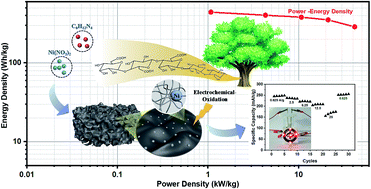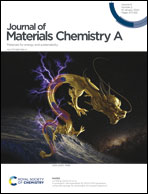Manipulating nickel oxides in naturally derived cellulose nanofiber networks as robust cathodes for high-performance Ni–Zn batteries†
Abstract
Nickel–zinc (Ni–Zn) batteries are currently regarded as promising energy storage devices due to their high efficiency, high output voltage and good safety. However, the low energy density and poor rate performance caused by insufficient active sites and slow electron/ion transportation impede their future development in large-scale applications. To improve their electrochemical performance, we designed a new Ni-based composite with a unique structure by anchoring Ni–NiO nanoparticles onto a naturally derived and networked cellulose nanofiber carbon (denoted as Ni–NiO/CC), which can work as a robust cathode for Ni–Zn batteries. Benefiting from the elaborate structure that can speed up charge transportation and increase the number of active sites of cathode materials, the capacity of Ni–NiO/CC is remarkably improved from 2.3 mA h g−1 to 184 mA h g−1 at 0.625 A g−1. The as-fabricated Ni–NiO/CC//Zn battery delivers high capacity (256 mA h g−1 at 0.625 A g−1), superior rate performance (68.5% capacity retention at 25 A g−1), and good cycling durability (87.5% retention after 2000 cycles). More importantly, the maximum power density of the Ni–NiO/CC//Zn battery is 41.6 kW kg−1, presenting a peak energy density of 441.7 W h kg−1. This work promotes the facile manipulation of nanostructured electrodes based on sustainable biomass for green and advanced aqueous rechargeable batteries.



 Please wait while we load your content...
Please wait while we load your content...